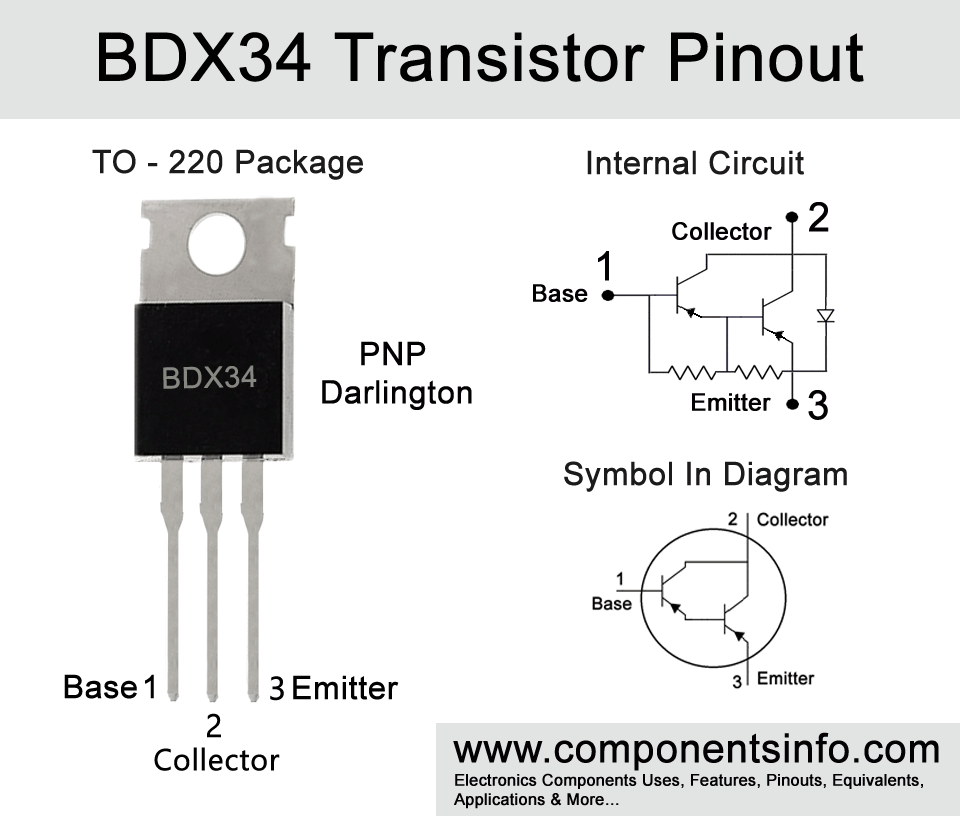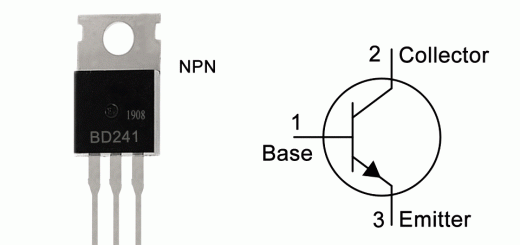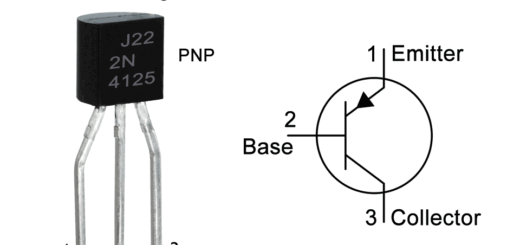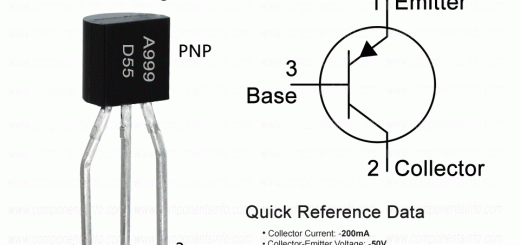BDX34 Transistor Pinout, Applications, Features, Characteristics and Other Useful Info
BDX34 is a PNP Darlington transistor available in TO-220 package. This post discusses BDX34 transistor pinout, applications, features, characteristics and other useful info.
Absolute Maximum Ratings:
- Package Type: TO-220
- Transistor Type: PNP Darlington
- Max Collector Current(IC): –10A
- Max Collector-Emitter Voltage (VCEO): –45V
- Max Collector-Base Voltage (VCBO): –45V
- Max Emitter-Base Voltage (VEBO): –5V
- Max Continuous Base Current: -0.25A
- Max Collector Power Dissipation (Pc): 70 Watt
- Minimum DC Current Gain (hFE): 750
- Max Storage & Operating temperature: -65 to +150 Centigrade
NPN Complementary:
NPN Complementary of BDX34 is BDX33
Replacement and Equivalent:
BDX34A/B/C, BDW47, BDX94C, MJF6668, NTE2344, BDW48, BDT62B
BDX34 Transistor Explained / Description:
BDX34 is another transistor from BDX34x PNP Darlington transistors series. Other transistors of the series are BDX34A, BDX34B and BDX34C. These transistors are available in TO-220 package and the pin layout of these transistors are as follow: The first pin is “Base”, second is “Collector” and the third pin is “Emitter”. They are designed for switching and amplification applications but can also be used for other general purpose applications.
The Absolute maximum ratings of the transistor are collector-emitter voltage of -45V, collector-base voltage of -45, collector current is -10A, base current is -0.25, and collector dissipation is 70W.
In case the cant find the transistor then you can easily replace it with any other transistor of its series. Moreover, you can also use any alternative transistor mentioned under the “Replacement and Equivalent”.
Where We Can Use it & How to Use:
BDX34 is manufactured to use in amplification and switching purposes but can also be used in other applications.
To use the transistor first of all check its pin layout now if you want to use it as a switch then connect its Base pin (through a resistor 1K to 10K) to the signal source from which you want to drive the load, then connect its Emitter pin with the positive supply of the circuit and connect its collector pin with the positive connection of the load and the negative connection of the load will be connected with the negative supply of the circuit.
Now for using it as an amplifier, it is important to know that there are many types of amplifiers you can build so it depends on your project requirements. But here we are mentioning a simple amplifier circuit so for building it connect the base of the transistor (through a 102pf or 103pf ceramic capacitor) to the signal source you want to amplify, connect the Emitter of the transistor to the positive supply of the circuit and connect the Collector pin with the positive speaker connection and the negative speaker connection will be connected to the negative supply of the circuit.
Applications:
Motor Control
Voltage inverters
Voltage Regulation
LED Drivers
Audio Amplifiers
Pulse Generator
Switching Circuits
DC to DC Converters
Battery Operated Applications
Safe Operating Guidelines:
Here are some safe operating guidelines for the transistor.
- First of all it is important to know that the transistor should not be used to its absolute maximum ratings and the user should stay 20% from its max ratings.
- So the max continuous collector current is -10A therefore we will not drive load of more than -8A.
- The maximum collector to emitter voltage is -45V therefore we will not drive the load of more than -36V.
- The transistor should not be exposed at temperatures below -65°C and above 150°C.
Datasheet:
To download the datasheet just copy and paste the below link in your browser.
https://datasheetspdf.com/pdf-down/B/D/X/BDX34_FairchildSemiconductor.pdf



